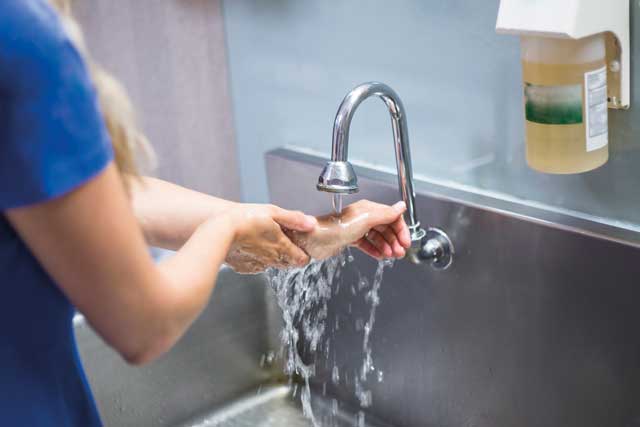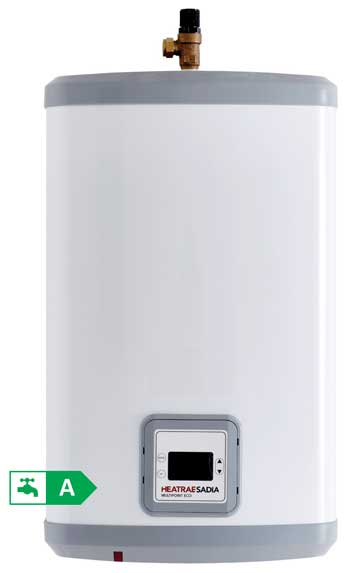
Unvented water heaters can play a vital role in eliminating the risk of a Legionella outbreak, says Roy Marsden, product manager at Heatrae Sadia.
Legionnaire’s disease is a severe form of pneumonia, caused by the bacterium Legionella. It is perfectly adapted for growth in water between 20°C and 45°C, and is often contracted from air conditioning systems, public pools, and fixtures such as showers, taps and toilets.
Its prevalence has brought it sharply into focus, with 450 confirmed cases last year in the UK (as of 30 November 2019) [1]. Due to the fact that it’s most often caught in public spaces such as hotels, hospitals or offices, there is increased pressure on businesses to combat the disease by providing a hot water supply that incorporates anti-Legionella capability.
Legionella protection
Conditions in a hot water system are inherently conducive to Legionella, so it is crucial that as much protection as possible is provided against the disease. Temperature control is one of the primary ways of doing this, with water stored above 60°C to prevent bacterial growth. Hot water should be distributed at 50°C or higher, with thermostatic mixing valves fitted as close as possible to outlets to prevent scalding.

Heatrae Sadia’s Multipoint Eco water heater is built with its own Legionella control system, continuously monitoring the temperature in the tank and activating a heat cycle if the water drops below 60°C.
Mandatory requirements
One of the most effective ways to protect against Legionella is to make sure all water systems comply with the standards and guidelines produced by the Health and Safety Executive. These include ACOP L 8 and HSG 274, as well as more industry-specific standards, such as HTM04 for healthcare premises, that help to give protection against Legionella.
There are seven mandatory requirements of any hot water system with the potential to be a source of bacterial growth:
- There must be an identifiable duty holder – this can include employers, facilities managers, or anyone in control of premises
- There must be a competent and appointed person to monitor the system
- The system must be monitored and maintained at all times
- The system must be risk-assessed on a regular basis
- Records or a logbook must be kept
- Plans of the system layout must be readily available
- The system must be regularly cleaned.
It is important that businesses meet these requirements to make sure that they are protecting employees, and to avoid falling foul of regulations.
Don’t ignore the risk
For many businesses, the bottom line remains the deciding factor for all purchasing processes. This will include specifying hot water systems, but the dangers of ignoring the threat of Legionella mean that this approach can prove to be a false economy.
The fallout in financial terms alone could be devastating, with the business leaving itself open to a host of liabilities to anyone who contracts the disease. Add to this lost days from office closure, plus the negative press that would materialise as a result of a Legionella outbreak, and the impact of not protecting against the disease becomes clear.
It is therefore crucial to choose a hot water system with maximum protection against Legionella; equally, however, the energy efficiency of the latest systems means that the total cost of ownership is reduced in comparison with older models. If you opt for a water system that has an energy efficiency (ErP) rating of “A”, such as the Multipoint Eco 30H, you can be assured of optimum defence against bacteria, along with minimal energy consumption.
[1] www.gov.uk/government/publications/legionnaires-disease-monthly-surveillance-reports-2019

